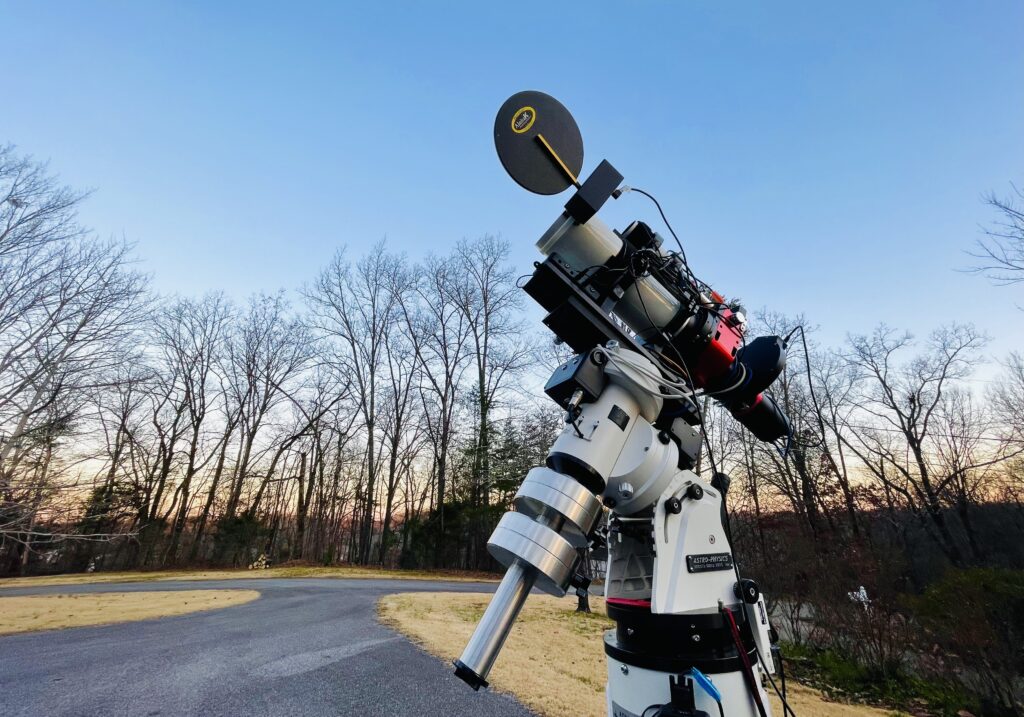
Yes I did. I had grand plans.
Recently I finished a five year project in Orion. On the way to completion I had many problems and failures. It took all of my understanding of the heavens (and the help of hundreds) to train a camera and telescope on one tiny part of our universe in an effort to reveal the hidden. People near and far asked me what’s next?!? “Next is still in the works” I would say, and that’s the focus of this post.
One frustration of my recent project was just- how- slow- I was moving across the sky. While the resolution was decent , I knew modern technology was moving at a break-neck speed to leave me behind. Tis’ life, they say. The best things come to those who wait- A better camera or a better telescope will always be in the works. So I started looking at the math and decided I wanted wider and faster. And the math says the sheer resolving power of the Takahashi FSQ106 isn’t going to be surpassed anytime soon. Copied- maybe, but not surpassed. Similarly, a full frame sensor would buy me the extra pixel scale to get me close to where I was (1.67 previously… 1.99 on the new system). In the year from deciding to move to a new system, a new camera sensor hit the scene and brought a newer tech to the forefront. This time, I bit. Previously, I’d shied away from CMOS tech, but not this time. I decided upon a QHY CMOS camera to compliment my new system.
In October 2020 I sold my William Optics 132flt and QHY16200 with Astrodon filters and began the search for a TakFSQ106 (with any upgrades I could find). Luckily I scored a great used scope with the TakFSQ106, Moonlite NiteCrawler WR35, and a TAK645 reducer for a great price. I began watching for a QHY600 to match the system, but initially I thought I’d just go with the QHY128 (another great QHY full frame camera- BUT a color camera- not a full mono camera). As luck would have it, I managed to find a QHY600 Combo #4 (camera, filter wheel, and LRGBSHO 50.8mm) in stock at a local (US) vendor and made the purchase. It was all going so well… (the grand plans, that is).
And this is where we pump the breaks. Unfortunately my camera kit came without (an error) the advertised 50.8 unmounted filters (Yes- the same type of filters) as I had previously sold. After an initial round of communication it became obvious I needed to make other arrangements to procure filters. I started calling the folks who helped me with equipment during my Orion Project. Eventually I had a pretty good idea of what was going on in the supply chain, talked to contacts at QHY, and purchased a new set of supposedly corrected LRGB filters from a different vendor (the same filters that were supposed to be in my camera kit initially). As luck would have it, one of those filters had a problem so I am still chasing a working system but getting closer.
While I still don’t have a set of my own matched filters to make this system work (and the deadline is quickly approaching to install), I have secured a set from a friend that will allow me to image this spring and summer, should my endeavors fail . I’m 20 hours away from this observatory and make two trips a year for contractual obligations of maintenance, so if things aren’t corrected in that window, they have to wait. And of course…. that means the grand plans must wait.
Hopefully I’ll get enough support to get things going. As you see in my post from a few days ago, testing is ongoing and certain vendors have been great in helping. Astronomy and astrophotography are a different kind of endeavor. Extremely difficult, but very rewarding, so it is important to find the right folks to help you with your grand plans. I get closer every day, but a grand plan has to start with a plan, even if it is a temporary one. 😉
Clear skies!
